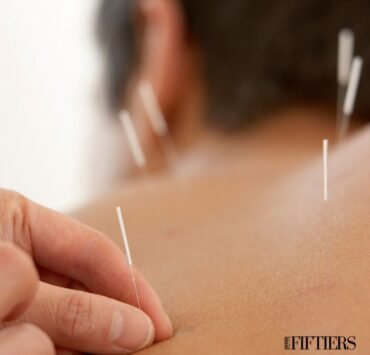Male Menopause: Myth or Reality of ‘Andropause’ and How to Face It

FIFTIERS | Life Begins at 50. La vida comienza a…
Can men go through a “menopause”? While the term “andropause” isn’t officially recognized by all medical bodies, science confirms that many men experience a set of hormonal, physical, and emotional changes after age 40 or 50 that significantly impact their well-being.
This process is not sudden or universal like female menopause, but it can have a silent, cumulative effect on vitality, libido, sleep, muscle mass, emotional balance, and even self-esteem. Understanding it is the first step toward embracing the second half of life with energy, clarity, and confidence.
What Is Andropause and Why Does It Matter?
Andropause refers to a gradual decline in testosterone, the key male sex hormone. Technically, this is known as late-onset hypogonadism. Starting as early as age 30–35, testosterone levels begin to drop by about 1% per year. In some men, the decline is sharp enough to trigger noticeable symptoms.
Once dismissed as a myth or a taboo subject, it’s now clear that testosterone affects far more than sexual drive. It plays crucial roles in mood regulation, muscle tone, fat distribution, bone density, immune function, and cognitive performance.
Common Symptoms: What to Look For
Andropause presents differently in each man. Common symptoms include:
- Low libido and fewer morning erections.
- Persistent fatigue and lack of motivation.
- Muscle loss and abdominal weight gain.
- Sleep disturbances or chronic insomnia.
- Mood swings, irritability, or unexplained anxiety.
- Difficulty concentrating or memory lapses.
These changes are often misattributed to stress or aging—but they may indicate a treatable hormonal imbalance.
Diagnosis: Going Beyond the Symptoms
Proper diagnosis requires clinical evaluation and lab testing, including:
- Total and free testosterone: Levels below 300 ng/dL are generally considered low.
- LH and FSH hormones: To identify the root cause of testosterone decline.
- Full metabolic panel: Including cholesterol, blood sugar, liver function, and PSA.
Additional factors—psychological, sexual, and lifestyle history—are also key to accurate assessment.
Treatment: A Holistic Approach
Testosterone Replacement Therapy (TRT) is the primary treatment for clinically low testosterone. It can be administered through gels, injections, patches, or implants. However, not all cases require hormone replacement.
In many instances, lifestyle modifications alone can significantly boost natural testosterone production and alleviate symptoms.
Evidence-Based Natural Boosters:
- Strength training: Increases testosterone and reduces belly fat.
- Deep, restorative sleep: Testosterone is primarily produced during sleep.
- Stress management: Chronic cortisol suppresses testosterone production.
- Optimize vitamin D, zinc, and magnesium: Essential for hormone synthesis.
- Reduce alcohol and quit smoking: Both damage hormonal balance.
Emotional and Social Dimensions
One of the greatest challenges of andropause is that it often unfolds in silence. Many men over 50 feel disconnected or ashamed about diminished energy or libido. But this is not failure—it’s a natural transition that requires medical support and emotional openness.
Talking about it, seeking help, and sharing experiences can turn this chapter into a breakthrough, not a breakdown.
A New Beginning After 50?
This stage of life doesn’t signal decline—it can actually be a time of reinvention and peak health. Men who take control of their hormonal health often feel stronger, clearer, and more sexually confident than in their 30s.
At FIFTIERS, we believe male hormonal health is an essential pillar of modern longevity. In the 21st century, aging is no longer something we endure—it’s something we manage strategically.
Conclusion
Andropause is not a myth—but it’s not a death sentence either. It is a real, measurable process that deserves open discussion and targeted treatment. Low energy, mood swings, or fading desire are not signs of weakness. They are signals to act.
Today’s men in their 50s, 60s, and 70s have more tools, knowledge, and agency than ever before. Knowing how to use that advantage is what sets apart those who merely grow older from those who truly evolve.
The silent revolution of testosterone has begun. Its name is self-awareness.
Discover more from FIFTIERS
Subscribe to get the latest posts sent to your email.















